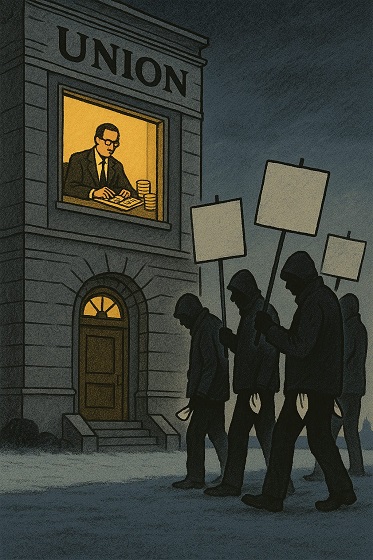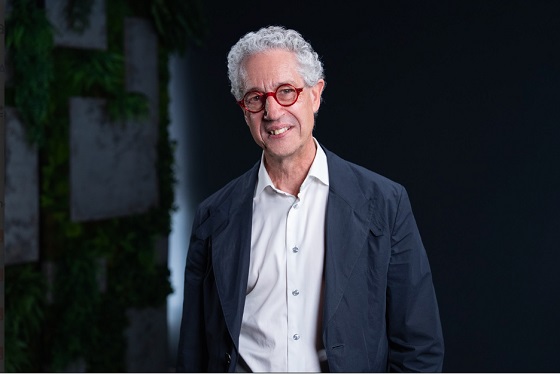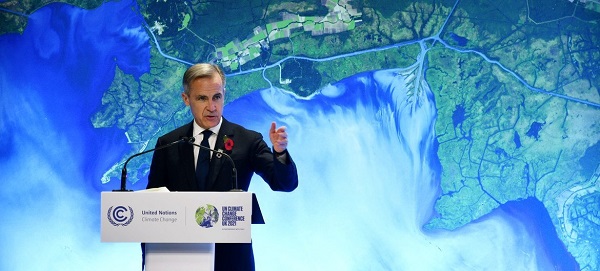National
Canadian pedophile claiming to be woman under investigation for sexually assaulting female inmates

From LifeSiteNews
‘Dangerous’ pedophile Frederick Radcliffe, an inmate at the Grand Valley Institution for Women, has a violent criminal history that includes sexual assault charges.
A male pedophile, claiming to be a woman, is under investigation for sexually assaulting female inmates in a Canadian women’s prison.
According to information published February 25 by Reduxx, two female inmates have accused Frederick Radcliffe, who uses the name Carissa Marie, of sexual assault at the Grand Valley Institution (GVI) for Women.
“Why has the Correctional Service of Canada placed me in this housing situation with Radcliffe, knowing how vulnerable I am as a survivor of sexual abuse that already occurred here in GVI?” one victim using the pseudonym Emma asked. She had previously been sexually assaulted by another trans-identified male inmate
“Why don’t my rights matter? Why doesn’t the CSC care about the trauma I’ve gone through, and why have they put me in a situation where I could become a victim again?” she questioned.
Radcliffe has a violent criminal history dating to 1989 when he was convicted for multiple acts of indecent exposure to young female victims.
Since then, he has been charged with several counts of sexual assault against girls as young as 13 years old. He has been declared a dangerous offender and given an indefinite prison sentence.
In 2017, Radcliffe began claiming that he was a woman and asking to be placed in a female prison. In 2023, he was transferred to the GVI for women, where he was reportedly “predatory right from the start.”
While only two women have filed official reports, several more have reported being assaulted by Radcliffe. He has since been transferred to a high security unit due to his ongoing assaults against women.
Unfortunately, this is not the first time women have been attacked by gender-confused men in women’s shelters. While the shelters were designed to protect women from predators, Liberal policies have allowed male predators to enter the facilities if they claim they are a woman.
Under Prime Minister Justin Trudeau, the policy is to place prisoners according to their preferred gender, not according to biology. As a result, male rapists and murderers can be sent to prisons with females.
In August, a 32-year-old man using the name Desiree Anderson but also known as Cody D’Entremont was charged with sexual assault at a women’s shelter in Windsor, Ontario.
Similarly, in 2022, a convicted sex offender pretended to be a woman to gain access to a woman’s shelter. While there, he allegedly raped a female resident.
As LifeSiteNews previously reported, Conservative Party leader Pierre Poilievre recently condemned the policy after a “sadistic” killer claimed he is female and asked to be placed in a women’s prison.
Bruce Dowbiggin
Burying Poilievre Is Job One In Carney’s Ottawa
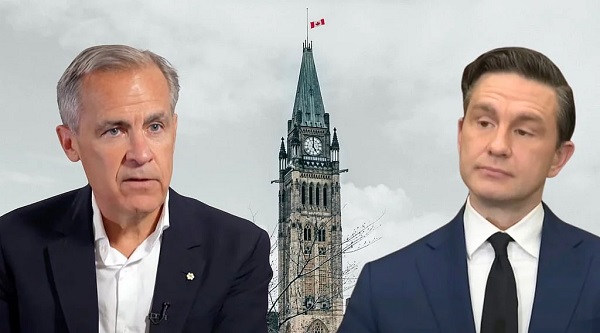
The Liberals’ first budget under Mark Carney— about nine months overdue— snuck through Parliament with Green Party leader-of-one Elizabeth “Margarita” May as the deciding vote. (All it took was a commitment to her insane climate targets.) A quick review of the Book of Revelations does not reveal this as a sign of the Apocalypse. But to Canadians who voted for a change in the spring it’s a rude reminder that no one is minding the store in Ottawa.
The Parliament Hill media has largely shelved discussion of Carney’s budget ‘guzintas (the PBO said there is a “less than 10 percent chance the government will keep its deficit-to-GDP ratio on a downward track through 2029-30… and Finance Canada has “changed its reporting of deficit financing, separating capital from operational spending.”) Translation: If Carney keeps on this track till 2030 the total GST collected from Canadians will not be enough to service the federal debt.
The chattering class is, however, full speed ahead on their Pierre Poilievre deathwatch. The leader of the CPC is one of their more anodyne figures to lead a party since Mackenzie King. His earnest kitchen-table schtick is about as dynamic as a cheese sandwich. Even when he famously defenestrated a blundering BC journalist in an apple orchard he never raised his voice. (What page am I taking from Trump’s book?”)

In the House of Commons, he has performed a monotone strafing of Liberal policy since becoming leader in 2023. He hasn’t elbowed aside a female NDP member. In the fine tradition of the House he does mock the Liberals front bench, throws water on their fevered policies and acts like a vice-principal of a small high school disciplining a student.
But in the judgment of today’s febered media— okay, the Liberals— he’s “rage-farming” or “rage-baiting” when pointing out that Canada’s debt is out of control, its real estate is a bubble waiting to burst and the relationship with the U.S. is flat lining. In fact he’s all rage, all the time, for their purposes. According to Carney’s bots, Poilievre stoops “to stirring and riling up ‘white-trash’ elements in society into hateful rhetoric against the prime minister. “
Team Carney has gloried in his travails since Donald Trump upended the spring election by cozying up to Carney. (Poilievre didn’t help himself taking pot shots at Trump who then dismissed Poilievre). CBC/ CTV/ Global savants who spit every time they mention Trump bizarrely were suddenly in enthusiastic approval of Orange Man Bad spanking PP for them.

The tone about his performance as opposition leader is vitriolic. “Pierre Poilievre’s rage-baiting and empty slogans aren’t what Canada needs”. His slogans (stolen by Carney during the election campaign), his by-election win in Alberta, his insistence on core issues— it drives the panelists on talk shows to fits for pique.
Which is funny when you think about it. Those with longer memories can recall the hijinx of the Liberals’ Rat Pack in the 1980s and 90s. Led by Sheila Copps (dubbed Tequila Sheila by Tory justice minister John Crosbie), Don Boudria and John Nunziata they were an early version of Polievere and Melissa Lantsman and the CPC front bench. Just more obnoxious.
Except the wind therapists were amused by them. Instead of rage monkeys they were the subjects of puckish CBC features. Copps could speak Italian with her (Hamilton) constituents and also had “perfect French,” said reporter Jason Moscovitz.” But she needles Mulroney in plain English,” he added, as Copps introduced a question for Brian Mulroney by comparing him to to Johnny Carson.
The irreverent Rats even produced their own T-shirts to wear in the House. “Other MPs say he’s sleazy, slimy, and a snake,” said Moscovitz, of Nunziata as he donned one of the T-shirts. So Nunziata used the same words in the House of Commons.”Sleazy, slimy Tory patronage!” he proclaimed on the floor of the House.

Laugh? We could have died. It was entertaining in the collegial debating club of the time. The sparring of the feisty Copps and her target John Crosbie was mint.
But now that the Liberals are entering a second decade of mismanaging the nation, their appetite for impertinence has disappeared. So the clever ripostes of Copps are now Poilievre “rage” farming and “rage baiting”. Some people have noticed the contrast: “Caucus unrest treated as a calamity when it involves the Conservatives, while Liberals get a pass” But the bubble-bound Canadian public only hears one slant.
In the U.S. there are hopeful signs of a bubble breakthrough. Hip TV host Bill Maher was forced to tell Woke comedian Patton Oswalt that his BlueSky world was strangling him. He enlightens an oblivious Oswalt on the UK grooming gangs. He also brought him up to reality when Oswalt said the Left never orders gender off of passports.
It’s not much, but it’s hopeful, at least in America. Here in Canada the information corridor is so thoroughly policed by the culture Stasi (using their dreaded Trump guns) that nothing can get through. Singing O Canada and not abusing the lyrics is considered a sacrilege on the Left. Daniel Smith is a Trumpist etc. Carney is intent on importing British hate speech convictions, not AI chips and nuclear energy.
If that isn’t enough of a bummer remember that Carney is just a stop-gap, a guy to rag the puck for a few years till the Liberals have groomed Justin’s eldest for the PMO. Where he can complete the Woking of traditional Canada that Grandpapa Pierre started in 1968.
Bruce Dowbiggin @dowbboy is the editor of Not The Public Broadcaster A two-time winner of the Gemini Award as Canada’s top television sports broadcaster, his new book Deal With It: The Trades That Stunned The NHL And Changed hockey is now available on Amazon. Inexact Science: The Six Most Compelling Draft Years In NHL History, his previous book with his son Evan, was voted the seventh-best professional hockey book of all time by bookauthority.org . His 2004 book Money Players was voted sixth best on the same list, and is available via brucedowbigginbooks.ca.
Energy
Here’s what they don’t tell you about BC’s tanker ban

From Resource Works
By Tom Fletcher
Crude oil tankers have sailed and docked on the British Columbia coast for more than 70 years, with no spills
BC Premier David Eby staged a big media event on Nov. 6 to once again restate his opposition to an oil pipeline from Alberta to the Prince Rupert area.
The elaborate ceremony to sign a poster-sized document called the “North Coast Protection Declaration” was dutifully covered by provincial and national media, despite having no actual news content. It is not a response to Alberta’s plan to finance preliminary work on a new oil pipeline, Eby insisted. It’s to confirm the direction of growing the BC economy without, you know, any more oil pipelines.
The event at the opulent Vancouver Convention Centre West was timed to coincide with the annual BC Cabinet and First Nations Leaders Gathering, a diplomatic effort set up 10 years ago by former premier Christy Clark. This year’s event featured more than 1,300 delegates from 200 First Nations and every BC government ministry.
A high-profile event with little real news
The two-day gathering features 1,300 meetings, “plus plenary and discussion sessions on a variety of topics, including major projects, responding to racism, implementation of the Declaration Act, and more,” the premier’s office announced.
Everyone’s taxpayer-funded hotels and expense accounts alone are an impressive boost to the economy. Aside from an opening news conference and the declaration event at the end, the whole thing is closed to the public.
The protection declaration is a partnership between the BC government and the Coastal First Nations, Eby said. As I mentioned in my Oct. 15 commentary, Coastal First Nations sounds like a tribal council, but it isn’t. It’s an environmental group started in the late 1990s by the David Suzuki Foundation, with international eco-foundation funding over the years that led to the current name, Coastal First Nations Great Bear Initiative.
The evolution of the Coastal First Nations initiative
Their current project is the Great Bear Sea, funded by $200 million from the federal government, $60 million from BC, and $75 million from “philanthropic investors.” This is similar to the Great Bear Rainforest conservation project, backed by mostly US billionaire charity funds, that persuaded Justin Trudeau to turn the voluntary tanker exclusion zone into Canadian law.
Leadoff speaker in Vancouver was the current Coastal First Nations president, Heiltsuk Chief Marilyn Slett. She repeated a well-worn story about her remote Central Coast community of Bella Bella still struggling with the effects of an “oil spill” in 2016.
In fact, the 2016 event was the sinking of a tugboat that ran aground while pushing an empty fuel barge back down from Alaska to a refinery in Washington to be refilled. The “oil spill” was the diesel fuel powering the tugboat, which basic chemistry suggests would have evaporated long ago.
Fuel dependence on the remote BC coast
Remote coastal settlements are entirely dependent on fuel shipments, and Bella Bella is no different. It has no road or power grid connections, and the little seaside village is dominated by large fuel tanks that have to be refilled regularly by barge to keep the lights on.

Alaska North Slope crude has been shipped by tanker to Washington and beyond for more than 60 years. Yes, there’s a North Coast “exclusion zone” where US-bound tankers go west around Haida Gwaii rather than down the Inside Passage, but once the ships reach Vancouver Island, they sail inside right past Victoria to refineries at Cherry Point, March Point, and other US stops.
Through the tall windows of the Vancouver convention centre, you can watch Aframax crude tankers sail past under the Second Narrows and Lions Gate bridges, after loading diluted bitumen crude from the expanded Westridge Terminal in Burnaby. That is, of course, the west end of the Trans Mountain Pipeline, which has operated since 1954 with no spills, including the branch line down to the Cherry Point complex.
There are many more crude tankers exiting Vancouver now that the TMX expansion is complete, but they aren’t filled all the way because the Second Narrows is too shallow to allow that. A dredging project is in the works to allow Aframax-sized tankers to fill up.
A global market for Alberta crude emerges
They enter and exit Burrard Inlet surrounded by tethered tugboats to prevent grounding, even if the tanker loses power in this brief stretch of a long voyage that now takes Alberta crude around the world. Since the TMX expansion, shipments that used to go mostly to California now are reaching Korea, Japan, China, Hong Kong, and Singapore as well.
The US captive discount has shrunk, the tripled pipeline capacity is rapidly filling up, and pumping stations are being added. This is the very definition of Mark Carney’s nation-building projects to get Canada out of the red.
The idea that the North Coast can host fuel barges, LNG tankers, bunker-fired cruise ships, and freighters but can’t tolerate Canadian crude along with the US tankers is a silly urban myth.
Tom Fletcher has covered BC politics and business as a journalist since 1984. [email protected]. X: @tomfletcherbc
-

 Business15 hours ago
Business15 hours agoCanada is failing dismally at our climate goals. We’re also ruining our economy.
-

 Daily Caller2 days ago
Daily Caller2 days agoDemocrats Explicitly Tell Spy Agencies, Military To Disobey Trump
-

 Alberta1 day ago
Alberta1 day agoAlberta on right path to better health care
-

 Business2 days ago
Business2 days agoClimate Climbdown: Sacrificing the Canadian Economy for Net-Zero Goals Others Are Abandoning
-
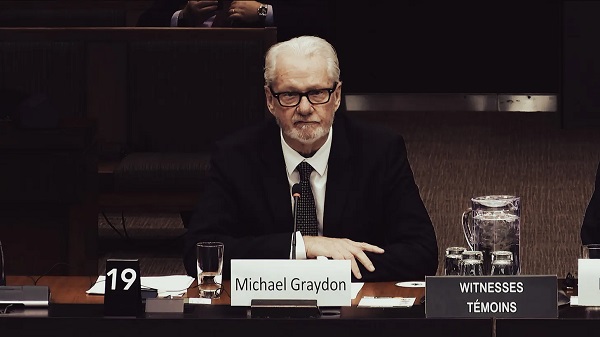
 Business2 days ago
Business2 days agoNearly One-Quarter of Consumer-Goods Firms Preparing to Exit Canada, Industry CEO Warns Parliament
-

 Great Reset2 days ago
Great Reset2 days agoAre climate-obsessed elites losing their grip over global politics?
-

 Daily Caller2 days ago
Daily Caller2 days agoALAN DERSHOWITZ: Can Trump Legally Send Troops Into Our Cities? The Answer Is ‘Wishy-Washy’
-

 Alberta1 day ago
Alberta1 day agoAlberta Emergency Alert test – Wednesday at 1:55 PM




